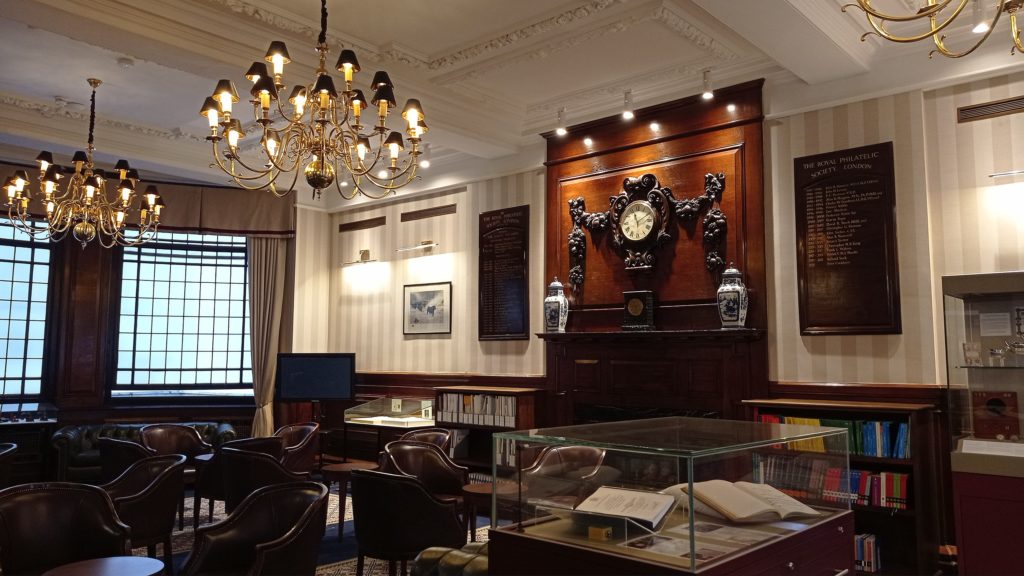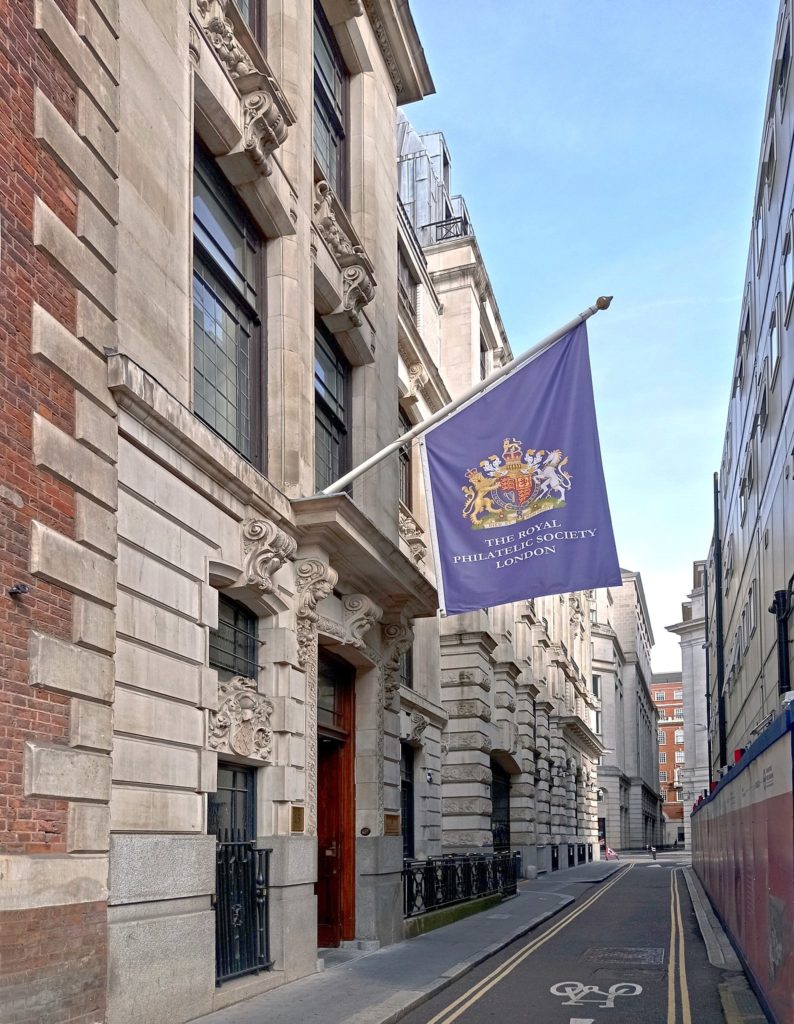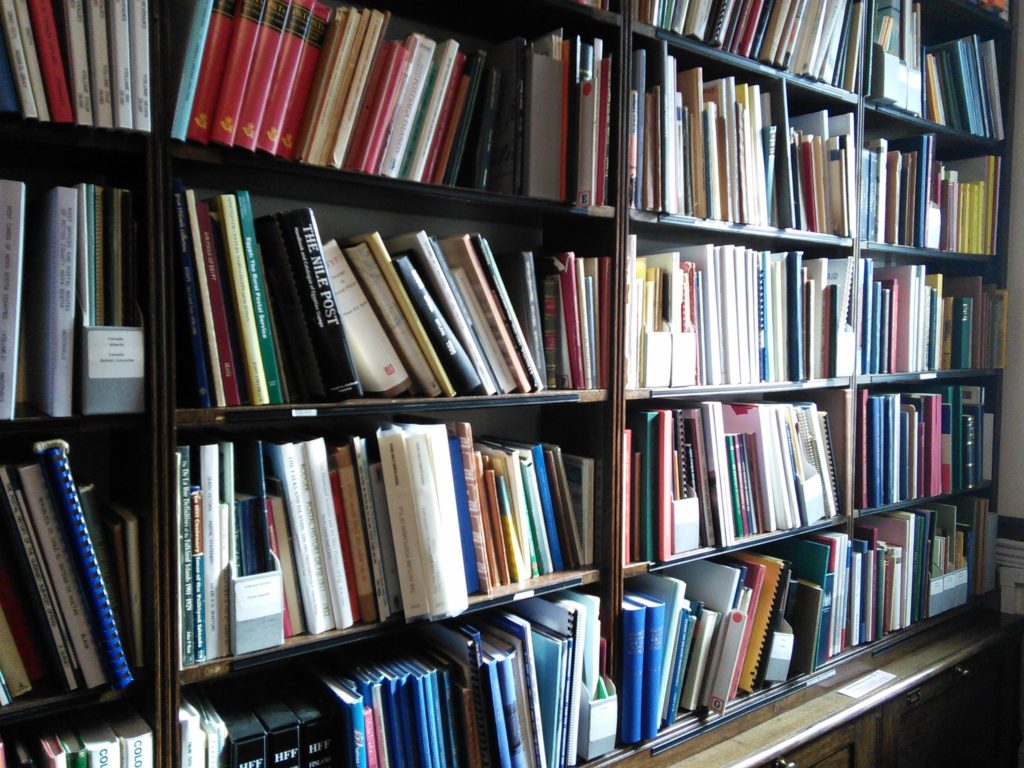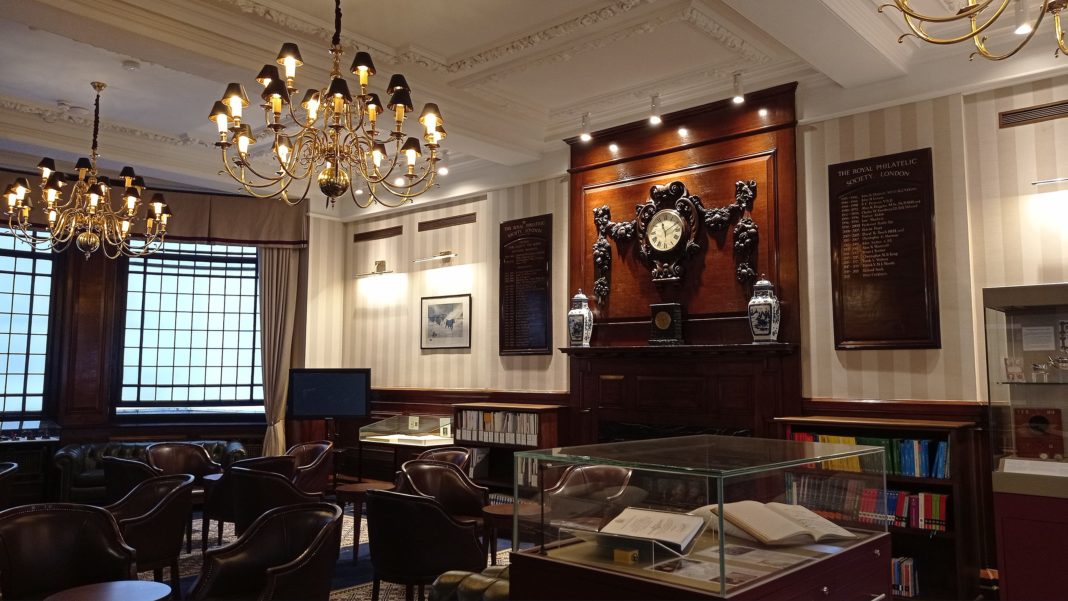The society runs a postal museum, the Spear Museum of Philatelic History, at its headquarters in the City of London.

The society was founded on 10 April 1869 at a meeting at 93 Great Russell Street in the rooms of the stamp dealer J.C. Wilson. Permission to use the prefix “Royal” was granted by King Edward VII in November 1906. Prince George, the Duke of York (future George V), was an enthusiastic stamp collector. He served as honorary vice-president of the society from 1893 to 1910. His father, King Edward VII, had a large stamp collection that he gave to Prince George, which became known as the Royal Philatelic Collection. When he was crowned King, George V stayed with the Society as its royal patron. His second son, George VI, continued to expand the royal collection.

The former patron was Her Majesty Queen Elizabeth II. Every September, at a special meeting of the society, part of the Royal Philatelic Collection is displayed by its keeper. Queen Elizabeth was not known to be a philatelist herself, but the royal family has maintained and added to the collection passed down by Edward VII.

“The Royal,” as it is known, has 2,200 members in dozens of countries, with the highest numbers of members in the United Kingdom and the United States. Members are of two classes, fellows and members. Fellows are entitled to use the post-nominals “FRPSL”.
Fellows are elected from members based on service to the society and to philately. The society publishes a journal, The London Philatelist, which includes articles, book reviews, society news, advertisements, and other items.
According to Wikipedia














